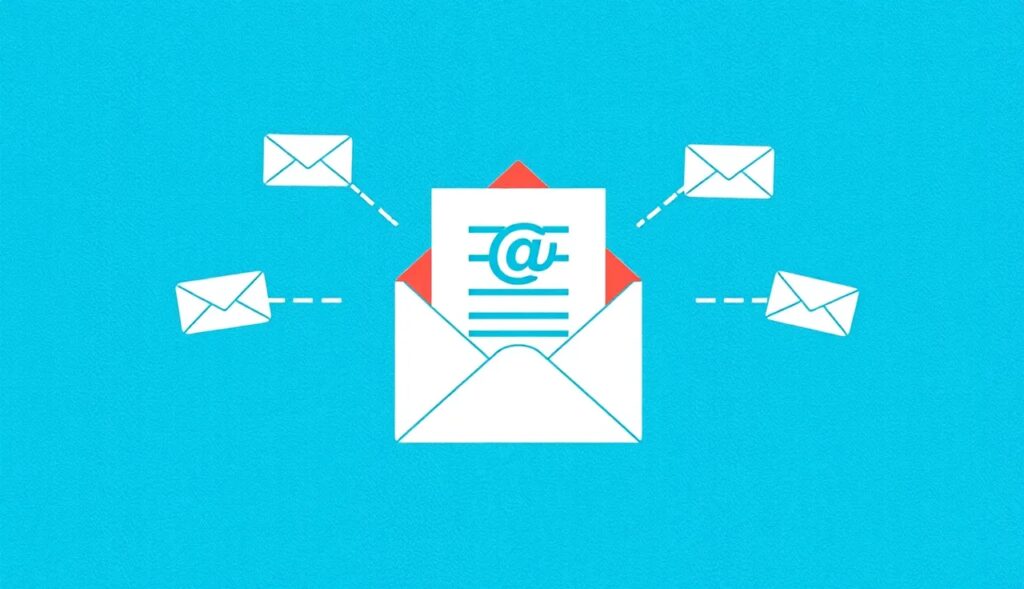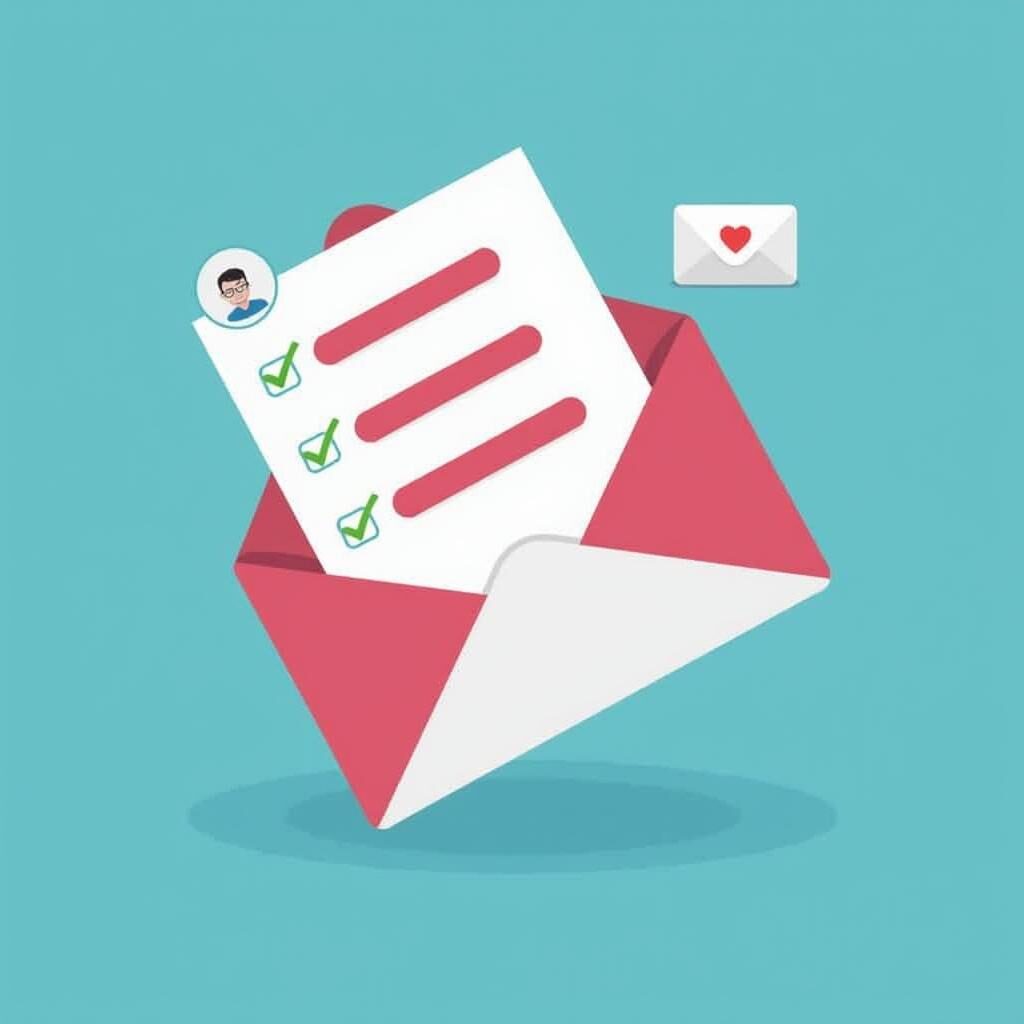
Email marketing has taken on a whole new dimension with AI-powered personalization. It’s no longer just about sending messages but crafting ones that truly resonate with the recipient.
Let’s dive into the most effective strategies and tools, so you can optimize your email campaigns like never before.
Why AI Personalization in Emails Matters
Enhanced Customer Engagement
AI helps tailor email content based on user preferences, behaviors, and past interactions. It’s the secret to making emails feel personal, not robotic.
Personalized emails achieve higher open rates because they align with what customers care about. For example, suggesting a product someone viewed last week drives engagement.
Pro Tip: Use tools like Dynamic Yield or Bloomreach to create hyper-relevant email campaigns.
Improved Conversion Rates
When an email addresses a specific pain point or offers a desired solution, it’s more likely to convert. AI analyzes patterns to ensure that happens.
Think: recommending a discount on a product left in a cart or sending updates about a price drop on a wishlist item.
Saves Time & Boosts ROI
AI takes the guesswork out of personalization. Automated systems generate recommendations, segment lists, and even craft subject lines.
This efficiency leads to better results in less time. Who doesn’t love that?

Key AI Email Strategies You Need to Know
Predictive Analytics for Better Timing
Timing is everything in email marketing. Predictive analytics ensures emails land in inboxes when users are most likely to read them.
AI tools like Optimail or Seventh Sense analyze historical data to determine the perfect send times.
- Morning reader? Evening scroller? AI gets it right.
- Bonus: This improves click-through rates (CTR) dramatically.
Dynamic Content for Hyper-Personalization
Dynamic content is a game-changer. AI crafts unique messages for every recipient by inserting personalized elements into the email body.
For example:
- Names in subject lines.
- Product recommendations based on recent purchases or browsing history.
Check out tools like Mailchimp and HubSpot for dynamic content integration.
AI-Optimized Subject Lines
Subject lines are your first impression—make them count! AI tools like Phrasee analyze patterns and suggest compelling, high-performing headlines.
It’s not just about personalization but also about tone, length, and even emojis that connect with your audience.
Example:
- “Tom, Your Favorite Sneakers Are Back in Stock!”
- “We’ve Got a Deal You’ll Love Today 🚀”
A/B Testing Made Smarter
Gone are the days of manual A/B testing. AI speeds up the process by dynamically testing various email versions and automatically rolling out the most successful one.
Key elements to test:
- Subject lines.
- Layouts.
- Call-to-action (CTA) buttons.
Behavior-Triggered Campaigns
AI can trigger emails based on user behavior, ensuring messages are timely and relevant.
Scenarios:
- Welcome emails when someone subscribes.
- Follow-ups on abandoned carts.
- Re-engagement campaigns for inactive users.
Recommended Tools: Klaviyo, ActiveCampaign, or Drip.
Top AI Tools for Email Personalization

Mailchimp: A Comprehensive Solution
Mailchimp has evolved into an AI-powered email marketing giant, offering dynamic content, advanced segmentation, and predictive analytics.
Key Features:
- Audience insights powered by machine learning.
- Predictive send times for improved engagement.
- Dynamic recommendations for tailored product suggestions.
Mailchimp excels for businesses seeking an all-in-one marketing platform.
HubSpot: Beyond Email Marketing
HubSpot integrates AI across its CRM and email tools, ensuring personalization at every customer touchpoint.
What sets it apart:
- Smart content based on CRM data insights.
- Automated A/B testing to refine campaigns effortlessly.
- Sophisticated workflows to trigger personalized emails.
Perfect for B2B and service-based businesses.
Klaviyo: E-Commerce Extraordinaire
Klaviyo is a powerhouse for e-commerce brands looking to scale with AI. It integrates seamlessly with platforms like Shopify and Magento.
Features that shine:
- Advanced behavioral targeting for triggered emails.
- AI-backed product recommendations.
- Predictive analytics to identify churn risks and VIP customers.
E-commerce stores thrive with Klaviyo’s focus on ROI-driven campaigns.
Phrasee: The Subject Line Specialist
If you’re stuck on how to make your emails stand out, Phrasee is your go-to. This AI-driven tool focuses on optimizing language and tone for subject lines and CTAs.
Notable features:
- AI-powered language generation.
- Performance predictions for subject lines and copy.
- Tone adjustments to match your brand voice.
Great for brands wanting to perfect first impressions.
ActiveCampaign: Automation Extraordinaire
ActiveCampaign goes beyond personalization, offering a robust AI workflow engine to craft seamless customer journeys.
Key Benefits:
- Predictive content for every stage of the funnel.
- Automated email series based on behavior.
- Real-time data syncing with CRM tools.
It’s ideal for companies prioritizing efficiency and scalability.
Crafting Emails That Stand Out with AI
Prioritize Relevance Over Quantity
Bombarding users with emails is passé. AI ensures quality over quantity by segmenting lists and tailoring messages.
Practical Tip: Group your audience into smaller, actionable segments. Target them with laser-focused offers.
Leverage Emotional Triggers
AI analyzes which words evoke emotional responses. Use that to your advantage in subject lines and CTAs.
Examples:
- “Your Dream Vacation Awaits—Don’t Miss Out!”
- “Hurry! Only 3 Left in Stock!”
Personalize Visual Content Too
Dynamic visuals elevate your emails. AI tools can generate personalized banners, images, or GIFs based on user data.
Example Tools: Canva Pro with AI integrations, Movable Ink.
Optimize for Mobile Devices
Over half of emails are opened on mobile devices. AI tools automatically adjust layouts to ensure your emails are mobile-first.
Overcoming Common Challenges in AI Email Marketing
Avoiding Over-Personalization
Too much personalization can feel intrusive. Balance relevance with subtlety to maintain trust with your audience.
AI can help here by:
- Using aggregate data rather than overly specific details.
- Focusing on preferences over personal life events.
Example: Instead of “We saw you browsing [exact product] yesterday,” use “We think you’ll love these recommendations.”
Data Privacy Compliance
With growing concerns around privacy, staying compliant is crucial. AI tools assist by anonymizing data and adhering to regulations like GDPR or CCPA.
Pro Tip: Use platforms with built-in compliance features like Zoho Campaigns or Salesforce Pardot.
Balancing Automation with Authenticity
Automated emails shouldn’t feel robotic. AI-powered copywriting tools like Copy.ai and Writesonic help craft conversational, human-like messages.
- Inject warmth with casual language.
- Address customers by name but avoid overdoing it.
Handling AI Biases
AI learns from past data, which may include biases. Regularly audit your campaigns to ensure they’re inclusive and fair.
Solution: Use tools like Google’s AI Principles Checker to flag potential biases.
Here’s a comparison table of AI email strategies, highlighting their key features, benefits, and best use cases:
| AI Email Strategy | Key Features | Benefits | Best Use Case |
|---|---|---|---|
| Predictive Send Times | Analyzes user data to determine the optimal time to send emails | Improves open rates and engagement | Timing email campaigns for audiences with varied schedules |
| Dynamic Content | Inserts personalized elements like names, products, and offers into email content | Enhances relevance and boosts click-through rates | E-commerce campaigns, product recommendations, or personalized newsletters |
| AI-Optimized Subject Lines | Generates and refines subject lines using AI-driven insights | Increases open rates and catches attention | Email campaigns with competitive inbox environments |
| A/B Testing Automation | Automates A/B testing by dynamically selecting and deploying the best-performing version | Saves time and ensures optimal email performance | Testing subject lines, layouts, and CTAs for high-volume campaigns |
| Behavior-Triggered Emails | Sends emails based on user actions, like cart abandonment or recent website visits | Provides timely, relevant messages for higher conversions | Drip campaigns, re-engagement, and abandoned cart recovery |
| AI-Powered Recommendations | Suggests products, services, or content based on user preferences | Drives upselling and cross-selling opportunities | E-commerce stores, content platforms, or subscription services |
| Sentiment Analysis | Analyzes language tone to tailor email messaging | Ensures alignment with audience emotions and boosts brand connection | Customer feedback loops, customer service follow-ups |
| Email Automation Workflows | Creates workflows that adapt to user behavior, like auto-responses or re-engagement flows | Reduces manual work and ensures consistent communication | Scaling email campaigns for growing businesses |
| Interactive Elements | Adds features like polls, quizzes, or countdown timers to emails | Increases engagement and interactivity | Campaigns for promotions, product launches, or customer feedback |
| Real-Time Personalization | Updates email content dynamically at the time of opening | Ensures content is always relevant to the recipient | Time-sensitive campaigns, such as flash sales or event reminders |
Key Takeaways
- Dynamic content and predictive send times are essential for personalization and engagement.
- Behavior-triggered emails and AI recommendations excel in driving conversions.
- Interactive elements add a modern, engaging touch to campaigns.
Outreach.io vs. Salesloft
Outreach.io: Enterprise-Level Automation
Outreach.io shines with its sophisticated automation features and integrations, making it a favorite among enterprise-level sales teams.
Key Features:
- AI-Powered Insights: Outreach’s AI identifies optimal times to engage prospects and provides real-time coaching.
- Sequence Automation: Customize complex, multi-step workflows across channels like email, phone, and LinkedIn.
- CRM Integrations: Seamless compatibility with Salesforce, HubSpot, and Microsoft Dynamics.
Best For:
Large teams needing scalable solutions with advanced automation capabilities.
Salesloft: Relationship-Centric Engagement
Salesloft focuses on relationship-building, offering intuitive tools to personalize outreach and track prospect engagement.
Key Features:
- Call Analytics & Recording: Detailed call analytics with coaching capabilities.
- Cadence Management: Easy-to-set cadences for consistent, personalized follow-ups.
- Team Collaboration: Shared templates, scripts, and workflows for collaborative selling.
Best For:
Teams prioritizing human-centered sales and ease of use.
Usability and Interface
Outreach.io: Robust but Complex
Outreach’s interface is feature-rich but comes with a steeper learning curve, especially for new users. It’s built for users who need powerful tools and can invest time in training.
Strengths:
- Advanced dashboards with in-depth analytics.
- Highly customizable workflows for power users.
Drawbacks:
- Overwhelming for smaller teams or beginners.
Salesloft: Intuitive and User-Friendly
Salesloft is known for its clean, intuitive interface, making it accessible for teams of all sizes. It prioritizes simplicity without sacrificing functionality.
Strengths:
- Easy setup with minimal learning curve.
- Quick onboarding for new sales reps.
Drawbacks:
- Slightly less customizable compared to Outreach.
Automation and AI Capabilities
Outreach.io: Cutting-Edge AI for Efficiency
Outreach leverages machine learning to predict prospect behavior, recommend actions, and automate time-intensive tasks.
Examples:
- Conversation Intelligence: Real-time suggestions during calls.
- Engagement Scoring: AI-based scoring for prioritizing leads.
Salesloft: Streamlined but Effective
Salesloft focuses on practical automation, like email personalization and cadence scheduling, without over-reliance on AI.
Examples:
- Email Templates: Automated, customizable templates for consistent communication.
- Call Insights: Tracks call performance for actionable feedback.
Integrations and Ecosystem
Outreach.io: Deep CRM Integrations
Outreach integrates deeply with CRMs like Salesforce and HubSpot, providing detailed reporting and seamless data sync. It also offers integrations with tools like ZoomInfo and LinkedIn Sales Navigator.
Best For:
Sales teams that require extensive CRM integration for large-scale operations.
Salesloft: Broader Collaboration Tools
Salesloft also integrates with CRMs but focuses on tools for team collaboration and customer interactions, like Slack and Gong.io.
Best For:
Teams looking to combine sales engagement with collaborative workflows.
Pricing and Scalability
Outreach.io: Higher Cost for Premium Features
Outreach is premium-priced, reflecting its enterprise focus. Costs scale with team size and feature requirements, making it a better fit for large teams with bigger budgets.
Pro Tip: Outreach’s ROI justifies the cost for high-volume sales operations.
Salesloft: Flexible for SMBs and Enterprises
Salesloft offers competitive pricing and flexibility, making it ideal for both SMBs and growing enterprises.
Pro Tip: For smaller teams, Salesloft delivers excellent value without breaking the bank.
Unique Strengths
Outreach.io
- Advanced Automation: Perfect for scaling high-volume campaigns.
- AI-Driven Insights: Maximizes efficiency with actionable recommendations.
- Enterprise-Level Features: Suited for large, complex sales teams.
Salesloft
- Simplicity and Usability: Easy adoption for teams of all sizes.
- Collaboration Tools: Focus on team-based selling.
- Cost-Effectiveness: Excellent value for small to mid-sized teams.
| Feature | Outreach.io | Salesloft |
|---|---|---|
| Target Audience | Large enterprises with complex workflows | SMBs, mid-sized, and enterprise teams |
| Core Focus | Advanced automation and AI-driven insights | Relationship-building and user-friendly tools |
| Ease of Use | Moderate learning curve; robust features | Highly intuitive; quick onboarding |
| AI Capabilities | Predictive analytics, engagement scoring, real-time coaching | Practical automation with minimal AI reliance |
| Cadence Management | Advanced multi-channel workflows | Simple and effective cadence tracking |
| CRM Integrations | Deep integrations with Salesforce, HubSpot, Microsoft Dynamics | Works well with Salesforce, HubSpot, and Zoho CRM |
| Team Collaboration | Limited focus on collaboration | Strong focus with shared templates, scripts, workflows |
| Email Personalization | AI-powered dynamic content and insights | Customizable templates with manual tweaks |
| Call Features | AI-backed call coaching and analytics | Detailed call insights and easy tracking |
| Reporting & Analytics | In-depth analytics with custom dashboards | Actionable, straightforward reports |
| Third-Party Integrations | Integrates with ZoomInfo, LinkedIn Sales Navigator | Slack, Gong.io, and collaboration tools |
| Pricing | Premium pricing; best for large budgets | Flexible plans; ideal for SMBs and growing teams |
| Scalability | Built for large-scale teams and complex needs | Scales well for both small and large teams |
| Best Use Case | High-volume campaigns with extensive automation | Personalization-focused, team-based selling |
Choosing the Right Platform
- Go with Outreach.io if: You need enterprise-grade automation, deep CRM integrations, and advanced AI insights.
- Choose Salesloft if: You prioritize ease of use, collaboration, and affordability for SMBs or mid-sized teams.
Both platforms are industry leaders, but your choice depends on your team’s size, goals, and technical needs.
Future Trends in AI Email Personalization
Hyper-Interactive Emails
Interactive emails—think polls, quizzes, and live updates—are becoming the norm. AI ensures these elements are personalized for maximum engagement.
- Example: A live countdown timer for a sale specific to the user’s location.
- Tool to try: Litmus for interactive design powered by AI.
Voice-Activated Email Experiences
As smart devices grow, expect emails that integrate with voice assistants like Alexa and Siri. AI can create voice-friendly content summaries and actions.
Real-Time Personalization
Real-time data updates allow AI to adjust email content moments before sending. This means last-minute price changes or live weather-based recommendations.
Enhanced Predictive Targeting
AI will advance further in predictive targeting, forecasting customer needs before they even realize them. Expect tools to get better at:
- Identifying life-stage triggers (new baby, home purchase, etc.).
- Proactively suggesting solutions.
Wrapping It Up
AI-powered email personalization is here to stay, revolutionizing how businesses connect with customers. By leveraging the right strategies and tools, you can craft emails that truly resonate, drive conversions, and deliver outstanding ROI.
Ready to take your email marketing to the next level? Start experimenting with these strategies today!
FAQs
Can AI really write better subject lines than humans?
Yes, AI tools analyze large datasets to predict which subject lines will generate the highest open rates. They consider factors like tone, length, keywords, and emojis.
Example: Tools like Phrasee create subject lines such as “Your Favorite Sneakers Are Back—Limited Stock!” instead of generic options like “Check Out Our Latest Deals.”
How are behavior-triggered emails different from regular campaigns?
Behavior-triggered emails are sent automatically based on a user’s specific actions, such as abandoning a cart or clicking a product link. Regular campaigns, however, are scheduled to go out to a broader audience.
Example: A SaaS company might send a tutorial email immediately after a user signs up, guiding them through the platform step-by-step.
Are AI-powered email strategies suitable for small businesses?
Absolutely! Many tools, such as Mailchimp or HubSpot, offer affordable AI-driven features that help small businesses personalize emails, automate workflows, and improve ROI.
Example: A local coffee shop might use AI to send personalized rewards emails, like “Your Next Latte is on Us, Alex!” to loyal customers.
How does AI handle email A/B testing?
AI automates A/B testing by simultaneously testing multiple versions of an email and dynamically selecting the highest-performing option to send to the remaining audience.
Example: Testing subject lines like “Flash Sale: 50% Off!” versus “Limited Time: Shop 50% Off!” helps AI identify the phrase that resonates most with your audience.
What are interactive email elements, and how do they work?
Interactive elements allow recipients to engage directly within the email through features like polls, quizzes, or countdown timers.
Example: A clothing retailer could include a poll asking, “Which color do you love more: Red or Blue?” This input could guide future product recommendations.
How does real-time personalization improve email relevance?
Real-time personalization updates the content of an email dynamically when the recipient opens it. This ensures the information is up-to-date and contextually relevant.
Example: A travel company might showcase flight prices that reflect current discounts rather than outdated ones from when the email was sent. & q in h3. Enhance with examples if they are meaningful.
How does sentiment analysis enhance email campaigns?
Sentiment analysis uses AI to interpret the emotional tone of words and phrases, ensuring the message aligns with the audience’s mood. This helps create emotionally resonant emails that strengthen connections.
Example: For a customer support follow-up, an AI might suggest softer language like “We’re here to help” instead of “Your issue has been logged.”
Can AI improve email deliverability?
Yes, AI can analyze factors like recipient engagement, spam triggers, and optimal send times to improve deliverability rates. It ensures that emails land in the inbox rather than the spam folder.
Example: AI might recommend reducing the use of all-caps or excessive exclamation marks, which are common spam indicators.
How are AI-powered email recommendations generated?
AI examines user data like browsing history, purchase patterns, and preferences to create tailored recommendations. These insights make emails more relevant and engaging.
Example: After a user buys running shoes, an AI might suggest accessories like socks or fitness trackers in follow-up emails.
Are behavior-triggered emails effective for re-engagement?
Yes, behavior-triggered emails are one of the best ways to re-engage inactive users. They remind recipients of actions they’ve taken or prompt them to complete unfinished ones.
Example: “Still Interested? Your Saved Items Are Waiting!” nudges users to return to a shopping cart they abandoned earlier.
How does AI help with email segmentation?
AI refines email segmentation by grouping contacts based on real-time behavior, preferences, demographics, and lifecycle stages. This ensures tailored communication for each segment.
Example: An online course provider could segment users into categories like “Beginners,” “Intermediate,” and “Advanced” based on course completion data.
Can AI help with multilingual email campaigns?
Absolutely! AI tools like Google Translate API or DeepL can translate content, while localization tools ensure cultural appropriateness for international audiences.
Example: A global brand might use AI to send the same promotional email in English, Spanish, and Mandarin, tailored for each market.
How do countdown timers in emails improve engagement?
Countdown timers create urgency by displaying real-time updates for limited-time offers or events. AI ensures they match the recipient’s time zone or preferences.
Example: A flash sale email might show “Only 2 hours left!” when opened, compelling immediate action.
How can AI predict customer churn through emails?
AI monitors patterns like declining open rates, lower click-through rates, and lack of interaction. It flags at-risk customers and triggers re-engagement campaigns.
Example: “We Miss You! Here’s 20% Off Your Next Purchase” can win back disengaged subscribers.
What’s the role of machine learning in email copywriting?
Machine learning analyzes what language, tone, and structure resonate most with specific audiences. It refines copywriting by learning from past email performances.
Example: AI might identify that casual language works better for millennial audiences, while formal tones suit executives.
Can AI optimize email campaigns for mobile users?
Yes, AI ensures emails are mobile-friendly by automatically resizing images, adjusting layouts, and testing readability on various devices.
Example: A food delivery app might use AI to send emails with tappable buttons for “Reorder Your Favorite Dish” that work seamlessly on smartphones.
Resources
Tools and Platforms:
- Mailchimp: A beginner-friendly platform offering AI-powered segmentation and dynamic content tools.
- HubSpot: Comprehensive CRM and email marketing tools with AI-driven personalization.
- Klaviyo: Best for e-commerce email campaigns, with predictive analytics and behavior-driven automations.
- Phrasee: Focuses on optimizing subject lines, headlines, and email tone using AI.
- ActiveCampaign: Combines email automation with AI-powered workflows for advanced audience targeting.
Case Studies and Whitepapers:
- How AI Improves Email Marketing by Salesforce: Detailed examples of AI-driven email campaigns and their outcomes.
- Mailchimp’s Customer Success Stories: Real-world examples of businesses using AI tools to grow engagement.
- The Future of Email Personalization by Litmus: A whitepaper analyzing trends in email marketing personalization through AI.
Communities and Forums:
- Email Geeks Slack Group: A vibrant community of email marketers sharing tips and resources, including AI strategies.
- r/EmailMarketing on Reddit: Offers peer-driven advice and the latest trends in email marketing and AI.
- Inbound.org: A community for discussing broader digital marketing topics, including email personalization.





